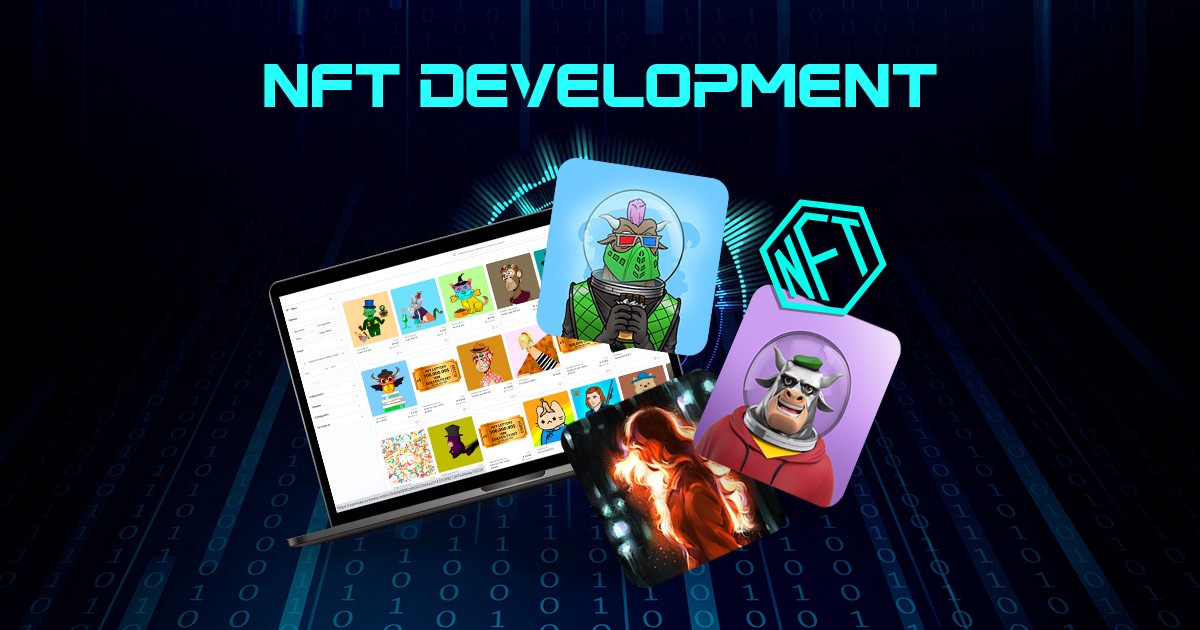Non-Fungible Tokens, mostly known by their acronym NFTs, have gained enormous traction, taking the realm of digital art and collectibles by storm and shaping the future of asset ownership. In this guide, we explore what NFTs are, their characteristics, the latest trends in the domain, and how to create a non-fungible token.
What Are NFTs?
In very simple words, we can define NFT as an immutable record that represents ownership of a digital asset, having unique identification.
The metadata holds the identity of the digital asset and all other details that attest to its exclusivity.
Blockchain technology validates the authenticity by securely storing metadata and the complete record of transactions indicating ownership of that unique asset.
When you create a non-fungible token, you produce a one-of-a-kind token on a blockchain network along with an electronic certificate representing its authenticity.
As of today, they are huge. As DappRadar reported in December 2021, there was a 230X growth in their trading volume in just one year. In 2020, the total trading volume of NFTs amounted to $100 million and it grew to $23 billion by the end of 2021.
NFTs allow you to tokenize, own and sell artwork, collectibles, music, in-game assets, property deeds, qualification certificates, real estate, death/birth certificates, licenses, domain names, a file on the computer, and many more things. It is a digital property created via blockchain technology and evidence in itself denoting it as an original, one-of-a-kind item.
Opportunities in NFTs
For digital artists, NFTs bring life-changing opportunities. Their sales have spiked to an unimaginable extent as the huge pool of crypto investors entered their market. Every other digital artist wants to create an NFT token today.
According to a report by blockchain specialist Chain analysis INC, the total crypto spending on NFTs valued $44.2 billion(approx.) 2021. The report further mentions that the huge number only sums up the cryptocurrency sent to ERC-721 and ERC-1155 smart contracts.
If you are thinking that the opportunity offered by NFTs is limited to digital artists, you are certainly wrong. Digital art NFTs are just a popular use case. The underlying concept unlocks numerous windows for several industries.
An NFT could be any unique digital item that cannot be replicated due to its identity (name, image, description, and more) being stored securely on the robust blockchain network.
It can act as a deed or any item representing ownership of a unique asset in the physical, digital, or both worlds.
Characteristics of Non-Fungible Tokens
The technological phenomenon, named NFTs which was coined in 2014 by Kevin McCoy, exploded into the mainstream in 2021. NFTs have made it easier to sell complete ownership of an item in digital space without involving any central institution.
By shaking hands with non-fungible token development services providers, anyone can today own an entity that exists in the digital or physical realm.
Here are some of the traits of NFTs that one must know before getting an NFT minted:
- Unique: NFTs can’t be replaced. Every token’s metadata holds data about its uniqueness. Such distinction enables the creators /owners to charge premium value for their work.
- Digitally Rare Resource: The electronic certificate of ownership is situated on a blockchain network that is secured by cryptographic technology, making the resource a scarce entity.
- Indivisible: Most NFTs cannot be fractionalized into smaller denominations. So, one cannot own a portion of an NFT. They have to purchase it completely to own it. However, fractionalized NFTs have emerged as a new type of tokens off-late.. allowing fractional ownership.
- Ownership: Since NFTs are indivisible there can be just one official owner of a token. The creators of NFTs have the private key for the account associated with that block. They can render ownership rights to any account. They may also offer multiple tokens of a single NFT for fractional ownership.
- Fraud Proof: No one can copy/paste an NFT into existence as it resides on a digital ledger maintained over thousands of computers on the worldwide internet.
A hacker might manipulate records on one or two computers but cannot falsify that record over all other computers hosting the blockchain. Moreover, the smart contract makes the records immutable from manipulation.
What Are Fractionalized NFTs?
From randomly minted collectibles to celebrities as creators, the hype of play-to-earn NFT games, and the emergence of advancements in technology, NFTs have had an eventful stint so far. -.
Before we learn about how to create an NFT token, here’s a quick run-through of the game-changing advancement called F-NFTs.
Fractionalized NFTs (or F-NFTs) enable NFT ‘minters’ and collectors to benefit from the fractional sale or purchase of one-of-a-kind assets.
Unique Attributes include:
- Unlike NFTs that can only be bought or sold on NFT marketplaces, F-NFTs can be traded on decentralized exchanges.
- F-NFTs make it easier for companies to raise funds with the sale of their digital assets. Contrasting to other fractional assets, they are tradeable with smart contracts. So, deals can happen even if both the trading partners are not online.
- The fractionalized NFTs have made it possible for minters to evaluate the market value of the unique digital assets. All they need to do is split their NFT into smaller assets and put 10-20% on the market.
- F-NFTs also introduce affordability in the NFT space. As the prices of NFTs have been increasing day by day, it has become very expensive for one person to own a whole NFT. The ability to invest in a fraction of the NFTs makes them accessible to a wider customer base, widening the NFT market.
What is NFT 2.0?
The better and upgraded version of NFT i.e. NFT 2.0 is capable of doing everything that NFT1.0 can’t. The phrase defines a new form of NFT that allows the stakeholders to benefit from exclusively new capabilities.
- The new generation of NFTs widens the scope of ownership. Unlike before, NFTs can now hold fungible/non-fungible tokens, represent multiple data sets, and be linked with other NFTs.
- NFT 2.0 unlocks opportunities for fractional ownership as well as rental put out. NFT collectors can offer fractions of an NFT to different buyers or can offer the underlying asset on lease through smart contracts. The former generates early liquidity and the latter generates passive income for NFT collectors.
- The newer NFTs are now upgradeable. It includes bringing changes to the artwork represented by NFT and its metadata.
- NFT 2.0 protocol makes the non-fungible tokens, more powerful than ever. An NFT can now control another NFT. It can give commands or execute modifications to its connected NFT.
- New features and functionalities of NFTs shall continue to increase their potential and scope. Needless to say, this creates ingenious solutions for use-cases across a vast variety of industries.
Use-Cases of NFTs in Metaverse
Metaverse is a digital replica of the real world that operates over a blockchain network, where AR and VR become digital component providers and NFTs act as proof of ownership to digital properties. The NFT metaverse interplay assures promising use-cases across different industries.
- The sale or purchase of unique virtual products or virtual versions of real products can happen in a hassle-free manner via NFTs in the metaverse. No physical presence or stationary is required for interactions, or huge-money deals and they happen digitally with NFT avatars and metaverse.
- NFTs enable individuals and businesses to represent themselves and reach a worldwide audience through the metaverse. Businesses can take advantage of a globalized exposure, gain popularity and engage the globalized audience through NFTs in the metaverse.
- Non Fungible tokens regulate the effort-less transfer of ownership in the metaverse. As everything remains over blockchain, the transfer record is immutable.
- As blockchain enables immutability and uniqueness is one of the major traits of NFTs which are powered by blockchain, problems of counterfeit products can be mitigated with NFTs. They can play the role of preserving the digital scarcity in the metaverse while businesses capitalize on the opportunity to sell their unique products virtually.
The use-cases of NFTs in the metaverse will keep on multiplying as the new waves of NFTs emerge and innovators of space push the limits of what is possible.
How to Create a Non-Fungible Token?
It is not necessary to have extensive knowledge of crypto or technical expertise for NFT development. The following steps would suffice for non-fungible token development:
1. Choose a Blockchain Platform for Your NFT
The decision is crucial as your selected network will release your NFT and track its ownership. As per your budget and types of crypto owned by your target buyers, you can choose the NFT blockchain platform
2. Consider the NFT ecosystem of the blockchain you have selected
Before you finalize your blockchain, make sure that you are aware of the capabilities of NFTs allowed in your selected blockchain. The blockchain must allow for the sale or transfer of NFTs across other blockchain networks.
3. Select content as per your business goals
Everything revolves around that thing you want to convert into an NFT. So, make sure that it is something unique. Secondly, if it is not already digital, you would need to get it in an appropriate digital file format
4. Decide the name and description for the selected content
This is important. By appropriately naming and describing your NFT, you are letting buyers make a well-informed purchase decision. So, make sure to do it carefully.
5. Settle on how many NFTs you want to create
No doubt, uniqueness is a key characteristic of NFTs but with time they have evolved into something whose multiple identical copies can be created. You need to decide and specify the number of permitted copies on the relevant blockchain so that it becomes unchangeable by anyone who doesn’t own the NFT.
6. Choose your NFT development company
Make sure the technology providers you choose are reliable. They must hold vast experience in the blockchain development domain and must have comprehensive knowledge and delivery experience in the NFT domain
7. Get your NFT promoted by professionals
After you have successfully created your NFT, you should focus on elevating your NFT project to the world. Make sure to hire a dedicated NFT consultancy and marketing company that can offer you impactful strategic and marketing solutions.
Start NFT Development Today
A meteoric rise in the popularity of NFTs has resulted in the emergence of a diverse variety of use cases recently. With time, as developers and creators continue to experiment, they will become an integral part of Web 3.0. Besides, due to their exceptional features, they might also become an essential part of the real-life asset markets.


